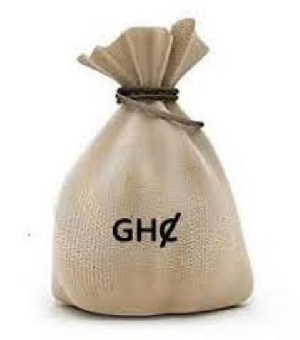- Home - News
- TWI News | TV
- Polls
- Year In Review
- News Archive
- Crime & Punishment
- Politics
- Regional
- Editorial
- Health
- Ghanaians Abroad
- Tabloid
- Africa
- Religion
- Election 2020
- Coronavirus
- News Videos | TV
- Photo Archives
- News Headlines
- Press Release
Business News of Tuesday, 5 November 2013
Source: B&FT
OkomfoAnokye Bank posts 58% growth in profit
The OkomfoAnokye Rural Bank Limited at Wiamoase in the Sekyere South District of Ashanti Region has posted a satisfactory operational performance for the 2012 year under review.
The bank’s profit after tax in the year under review stood at approximately GH¢421,974 - which showed an adequate growth of 58% over the previous year’s profit of GH¢266,941.
The bank recorded total deposits of approximately GH¢12.8million in 2012 as against approximately GH¢10million in the previous year, representing 28% growth. This was the result of hard working staff and the mobilisation drive pursued by Directors and Management.
Chairman of the Board of Directors Mr. Kwasi Bempah announced this at the 27th Annual General Meeting of shareholders held last Friday at the bank’s head office in Wiamoase.
According to him, the bank registered a very satisfactory performance in all the performance indicators despite the major economic challenges posed by heightened local competition.
He mentioned that the country recorded a GDP growth of 7.1% down, from 13.6% in 2012. Worsened trade balance and balance of payments put extreme pressure on the cedi, which depreciated by a whopping 17.5% in 2012.
Competition among banks grew more intensive, and Rural Community Banks (RCBs) which held captive markets began to reel under strong competition from the springing-up of various microfinance institutions in the RCBs’ respective catchment areas.
The Directors of the Bank have recommend a payment of dividend of GH¢0.003 or GHp0.3 per share, amounting to GH¢140,655 (representing 33.3% of the bank’s net profit of GH¢421,965) to shareholders whose names appeared in the register as at 31/12/12. This payment is a significant 50% increase on what was paid in 2011 -- GH¢.002 per share totalling GH¢88,980.
The bank continues to offer assistance to communities and institutions within its operational territories in terms of community development projects. A total amount of GH¢15,528 was spent in this direction. Areas that benefitted included educational institutions, health, security, sports, district Farmers’ Daycelebration, and scholarship awards to needy but brilliant students hailing from or resident in the bank’s catchment areas.
In conclusion, the Board Chairman remarked that the financial environment continues to be more and more competitive. Banks will have to be abreast with modern financial technologies, and will be compelled to operate under electronic platforms to be able to provide any meaningful and competitive Banking service.
“The Board will leverage on the mutual relationship it has with Management and staff to study the environment and respond appropriately to this changing environment.”











